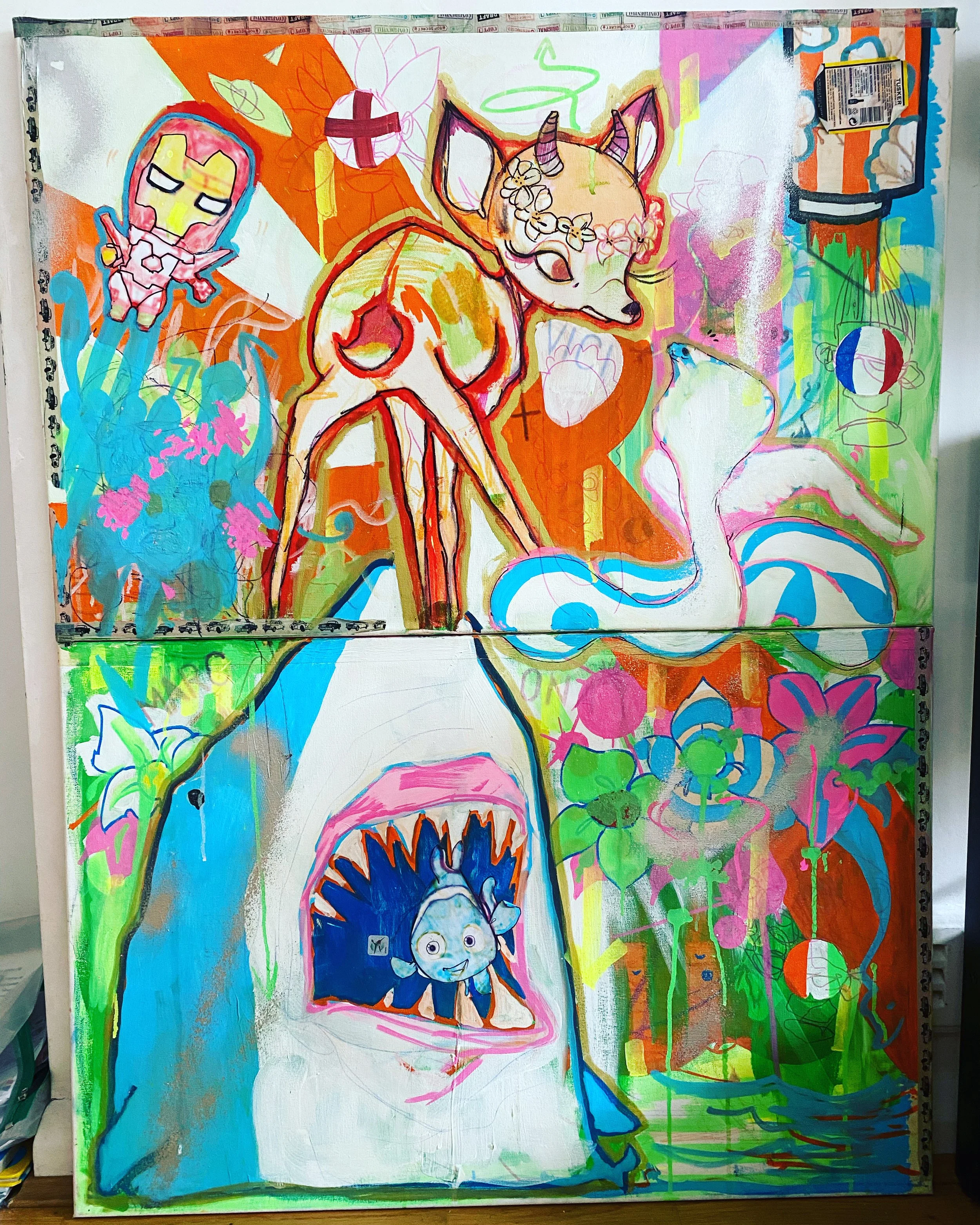The bottom panel flips the tone: a comical yet unsettling vignette of a wide-mouthed shark devouring a cheerful clownfish. The candy-colored palette undercuts the menace, creating a surreal tension between humor and violence. It nods toward consumer culture’s flattening of fear into entertainment, while simultaneously referencing children’s animation.
Throughout, the artist employs layering, erasure, and transparent washes to evoke a sense of palimpsest. Earlier gestures bleed through newer ones—half-erased florals, floating geometric forms, and hints of text—all suggesting memory, cultural oversaturation, and the impossibility of clean narratives in contemporary visual culture.
What’s most compelling is the deliberate lack of hierarchy: iconic figures coexist with gestural abstraction and folkish flora, forcing the eye to dart rather than settle. The work resists completion; its unfinished lines and exposed underpainting are not flaws but invitations—reminders of process, of art as perpetual becoming.
